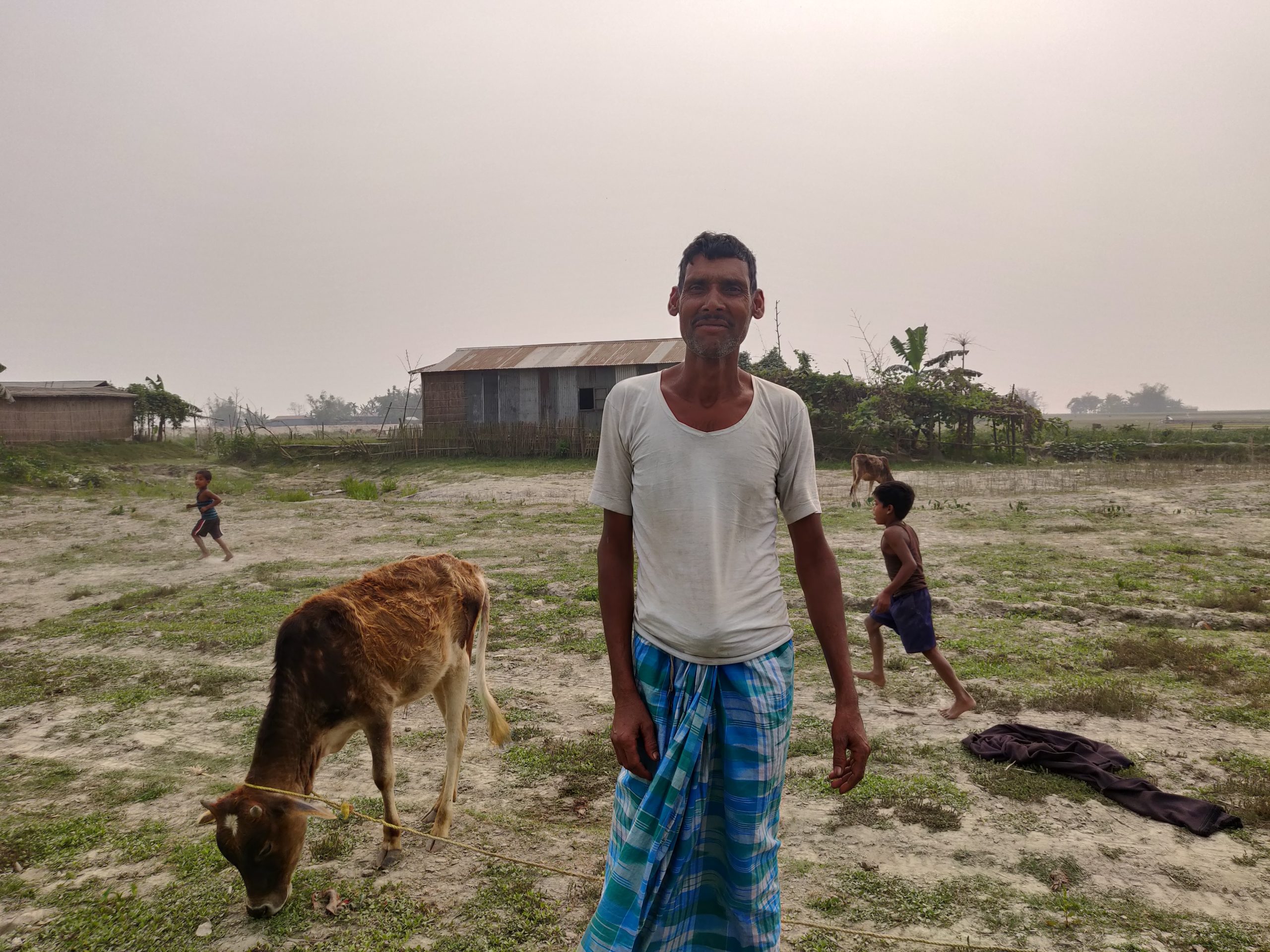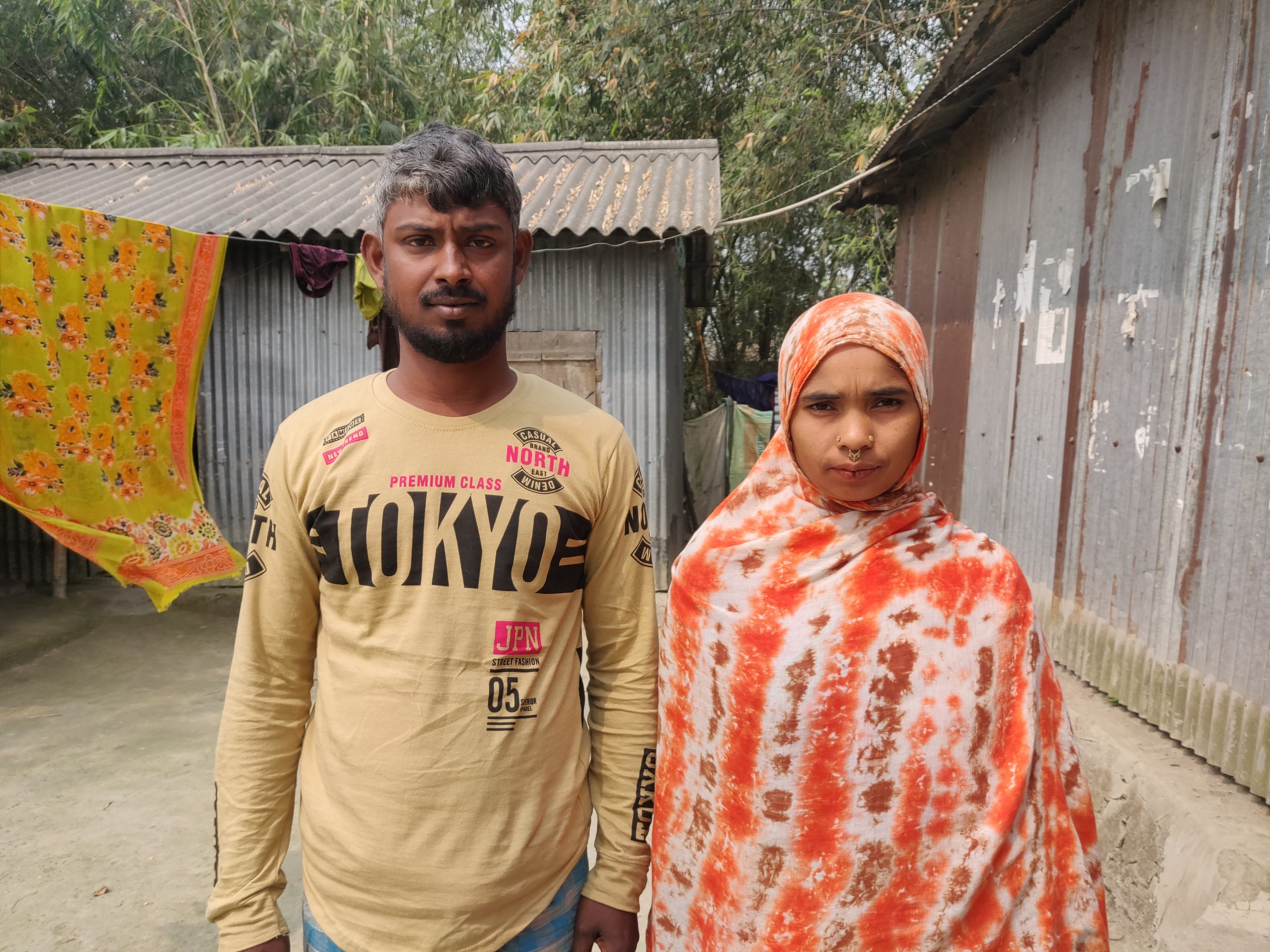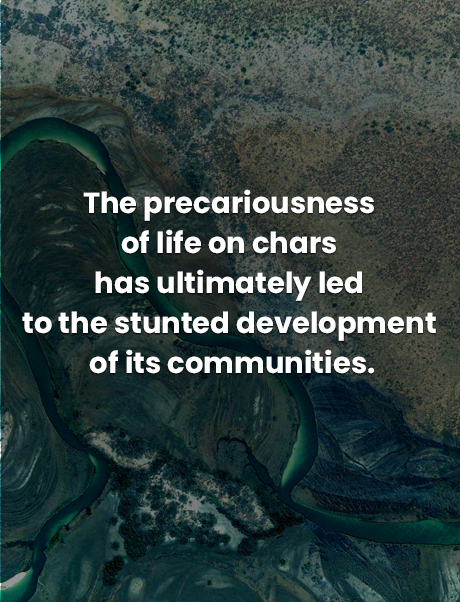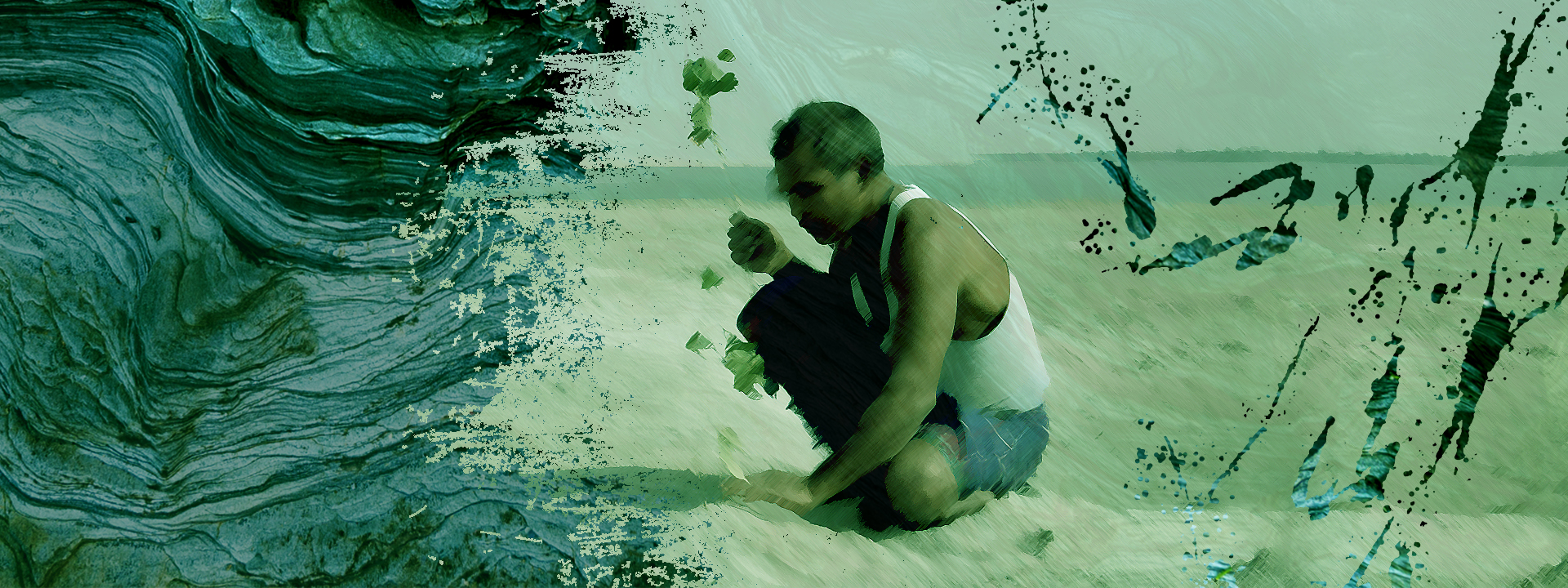On July 2020, while the rest of India was buckling under the weight of rising COVID-19 cases, Aman Ali was dealing with a different force of nature.
Ali, 54, lives with his family of seven near the banks of the Brahmaputra river, on an islet called Bagpara. On this small sandbar, Ali owns two-and-a-half acres of land, on which he grows basic fiber and food crops.
To a degree, this type of self-sustenance has become a necessity in Ali’s village, where the people must pass through four kilometers of sand and silt and makeshift bamboo bridges, and take a short boat ride across the river, to reach the mainland. Just to reach the village—or to leave it—is already a challenge.
The Brahmaputra is among the world’s longest rivers and biggest in terms of discharge. Starting from the slopes of the Himalayas, it weaves through a nearly 3,000-kilometer stretch, first winding through Tibet before it courses into Indian territory, and then flows through Bangladesh, where it eventually meets the Ganges river.
By the time it enters the state of Assam in northeastern India, several smaller streams and tributaries will already have drained into the Brahmaputra, only adding to its speed and volume. As it surges along, it brings with it an impressive volume of sand and silt, which eventually get deposited along the river banks.
Over time, as the sediments accumulate, there emerge almond-shaped islets like Bagpara, which are unstable sandbars that can disappear almost overnight, eroded by the river. Locally, these are known as chars or chaporis.
On that day in July 2020, Ali’s home was inundated by floodwaters from the river, making quick work of his house’s bamboo walls. He and his family were forced to stay in a boat, and all of them ended up safe, but they could do nothing else but watch as their rice and jute crops were swept away by the water.
But by that point, Ali has learned to live with the river. He says that this has become somewhat like a ritual for them, as floods hit them a handful of times per year.
Typically, they would just cut their losses and rebuild, but that has proven to be nearly impossible under COVID-19. “[W]e generally boat to buy groceries at nearby villages during floods,” Ali says. “But this year, all shops and markets were closed due to the lockdown. Despite having some money to buy, we had no food apart from rice and no vegetables to eat for days.”
“Government help would hardly reach us due to the difficulty of accessing this area. We had to manage whatever rice, black gram, spices we had at home,” he adds. “Police would beat us if we went outside.”

After floods washed away his home and crops, Aman Ali, 54, struggled to keep his family housed and fed, a problem made worse by the COVID-19 pandemic. Ali lives on a char, which are highly precarious, with even moderate changes in the weather bringing drastic impacts. As climate change worsens—driving the sea level higher and making storms stronger—life on these islets has become more tenuous than ever. (Photo by Varsha Torgalkar.)
Forced back
Ali’s story resonates with millions of people across India. According to a joint report by the International Labour Organization and the Asian Development Bank, over 4 million Indian youth lost their jobs due to the pandemic. A sizable proportion of them live on these waterlocked chars, have sought greener pastures in cities, but have been forced back due to the lockdown.
“There are no livelihood opportunities barring agriculture and labor work at farms at char villages,” explains Abdul Mannan, a social activist who runs a non-government organization called Xeuji Foundation in the town of Bilasipara in Assam.
“One or more men from every other household are seasonal migrants. They go to cities across India and work as unskilled laborers like mechanics, construction sites, and so on. Agriculture produce does not fetch good rates. Or heavy rainfalls or floods carry away the produce. Life is unpredictable at chars,” he adds.
This was the case with Zuhirrul Islam, 25, who used to be a construction worker at Guwahati, capital of Assam. He would earn Rs 350–400 (US$ 4.8–5.5) for a day’s work, totaling Rs 7,000–10,000 (US$96–137) over 20–25 days per month.
His wife, Tahirunnisa, 22, stays back at the village. “We don’t have land for agriculture to cultivate rice and vegetables. My husband would send me half of his income that is Rs 5,000 (US$69) a month to run the house,” she says. When Islam lost his job in March 2020, as a result of the lockdown, their family of four lost all of their income almost overnight.
“We sometimes eat rice with saltwater as I don’t have money to buy groceries, vegetables and spices,” Islam says. “Figuring out how to feed my family of four has been such a challenge … since September 2020. I have been living on charity from others and what little amount of rice I can get from the government’s Public Distribution System (PDS).” Under the PDS, certain grains are sold at subsidized rates.
Islam lives in Gutipara, a medium-sized village located in the Dhubri district in Assam. Just like Ali in Bagpara, Islam lives right at the bank of the Brahmaputra river. Despite having to weather hunger on the tiny char, Islam has no plans of returning to Guwahati for work.
“I was lucky that I could reach my village before transport facilities were closed in March,” he says, referring to the lockdown imposed by the government last year. “Many of my friends who were stuck in the cities could only get food once every 2–3 days. I hear that the second wave of the disease might come. I am scared to get infected or get stuck in the city. Besides, there is not much work available.”

Zuhirrul Islam, 25, and his wife Tahirunnisa, 22, stand in front of their house. Since he lost his construction job to COVID-19, Islam has had a hard time feeding his family of four and has often relied on charity or government stimulus packages. (Photo by Varsha Torgalkar.)
Stunted development
“Chars are permanent or semi-permanent lands within the Brahmaputra and its tributaries,” explains Dr. Partha Das, a social and environmental activist. Because the existence of these islets depends on various hydro-meteorological factors, life on chars can change quickly.
“Char areas are heavily affected by floods and land erosion. The growing number of floods and increasing intensity of rainfalls also make the situation worse,” he says.
In turn, people who live in chars are very vulnerable physically. Not only is the land they live on unsteady, but climate change—bringing more intense and irregular rains—has compounded the problem further.
“They are highly economically vulnerable and climate change leaves them nowhere to go,” says Das. “The government has many schemes for the char areas in general, but it has failed to implement them.”
The government, however, insists that rations, such as rice, pulses, and other supplies, have been provided to char communities. “I don’t get why people complain to reporters,” says Pallabh Majumdar, additional deputy commissioner for Dhubri district, where Islam lives. “I did not receive any complaints about people not receiving their rations. We distributed rations as per the government rule to each family.”
“[W]e provide help of Rs 95,000 (US$1,320) for housing if houses of people get swept away in the erosion,” he adds. The government has also allotted parcels of land to be given away; under state policy, residents who have lost farmlands to floods are eligible for this provision.

In fact, Majumdar points out, “the Assam government has distributed thousands of acres of land to landless people. That includes people on chars.”
He also says that the government has even conducted a survey of specific families who had suffered crop losses during the floods, and that they would be getting some sort of aid—soon, he adds, though it has been nearly a year since.
But Majumdar refuses to go into detail and to reveal exactly how the government plans to develop the chars, and what solutions it can offer by way of livelihood opportunities.
For other social activists, this seems to be the crux of the problem. The precariousness of life on chars has ultimately led to the stunted development of its communities. Teachers, health service providers, and businesses are all reluctant to set foot on these islets due to the challenges they pose.
“Char areas have (their) own challenges and limitations in terms of the implementation of development activities in human settlement areas,” says Bibhab Talukdar, CEO of Aaranayak, a non-profit organization based in Guwahati, one of the cities in Assam.
“Lack of easy access to char areas and annual floods from the Brahmaputra river are major challenges. Even if the government appoints officials like teachers or doctors to char areas, they don’t want to work in these areas,” he says. “Long-term development plans should be in place.” ●
Varsha Torgalkar is an independent journalist based in Pune, India. She covers rural economy, public health, child rights, gender, climate change, and travel for Indian and international news websites, including the South China Morning Post, The Third Pole, StoriesAsia, The Wire, Mongabay India, NewsClick, and Firstpost. She is the recipient of the Best Article on Humanitarian Crisis award conferred by the Press Institute of India and International Committee of Red Cross for 2020.



















